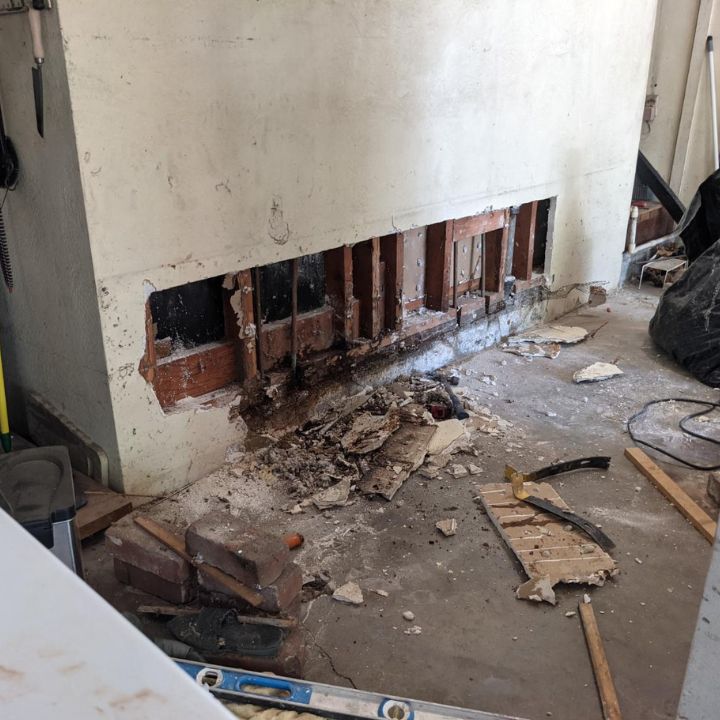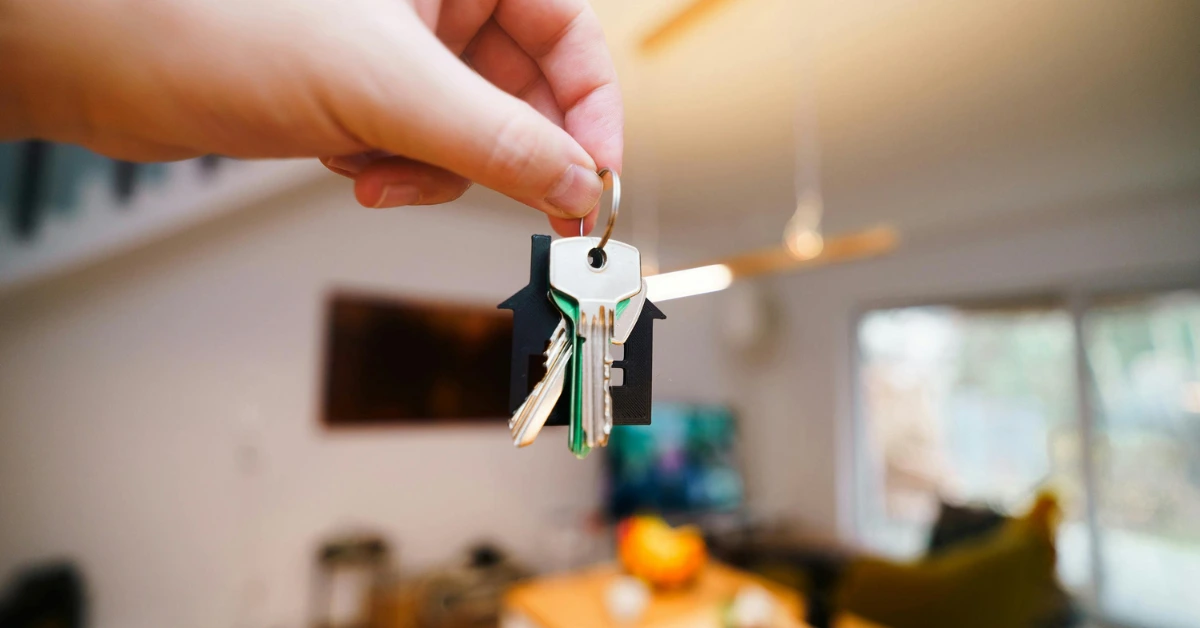How do you make money on rental property?
You’ve come to the right place. I’ve built a seven-figure rental property portfolio and in today’s article, I’ll show you how to make money renting properties so you can:
- Work fewer hours (or retire early, like I did)
- Make passive rental income
- Build long-term financial security and a legacy
Want to learn more? Let’s dive in.
What are different ways to make money on rental properties?
Did you know that over 44 million households in the US are renters? The US apartment rental market is valued at $259.4 billion. At the same time, landlords typically earn $10,000 or more annually per property they manage.
Investing in rental property is a proven way to generate passive income while building long-term financial security. In fact, I was able to leave my full-time job as a pharmacist after growing my rental property portfolio to seven figures.
So, why are rental properties such a great investment? The answer is simple: they create income in multiple ways. Let’s explore how rental properties generate wealth.
Rental income
Rental income is the most straightforward way to earn money from rental properties. It’s how I built a portfolio that now generates six figures per month.
To achieve this, you need to start with your first rental property and calculate your cash flow. Here’s how:
- Add up your expected rental income.
- Subtract your operating expenses from this total
The amount left over is your positive cash flow.
So, what are operating expenses? These are the costs associated with managing your rental property. Common examples include:
- Property taxes: Regular payments required by local governments.
- Advertising costs: Expenses to attract new tenants, such as online ads.
- Routine maintenance: Repairs and upkeep, like fixing a leaking pipe or replacing a refrigerator.
For instance, if a refrigerator in your rental property needs to be replaced, the cost would qualify as an operating expense.
By understanding and managing these expenses, you can accurately estimate your rental income and ensure your property generates positive cash flow.
I talk more about why rental income is a great income source here:
Property appreciation
Property appreciation occurs when the value of a property increases over time. For example, I purchased my first investment property for $262,000 and sold it seven years later for $437,500.
Several factors can influence property appreciation:
- Renovations: Upgrading the property can significantly increase its value.
- Location: Properties near top universities, hospitals, or areas with a high quality of life tend to appreciate faster, even without renovations.
- Job market growth: Areas with growing employment opportunities attract more renters, which boosts property value.
When choosing investment properties, consider these factors:
- Neighborhood quality: Look for areas with strong demand and appealing amenities like parks, public transportation, and shopping centers.
- Target renters: Think about who your ideal renters are and what they’re looking for. For instance, high-income earners are drawn to areas with abundant professional opportunities.
Avoid buying properties solely because they’re cheap. Instead, focus on the long-term potential of the area and the type of tenants you want to attract.
Amortization
Amortization is the process of repaying a loan over time by gradually paying down both the principal (the loan amount) and the interest. Here’s how it works:
Suppose you buy a rental property for $300,000 and finance the entire amount with a 30-year mortgage at a 6% interest rate. Your monthly payment would be approximately $1,800.
You can make this same calculation with an amortization calculator.
Early on, most of your monthly payments would go towards paying the interest. But over time, your payments would mainly go toward your loan’s principal, which is the loan amount itself.
Once you know how much your monthly mortgage would be, you can compare your mortgage to your expected rental income to see if an investment would be worth it or not.
Tax benefits
Owning rental property comes with significant tax advantages that can help you save money during tax season. Here are some key ways landlords can benefit:
Here are a few examples of ways you can do that:
- Mortgage interest
If you have a mortgage on your rental property, the interest on your payments is tax-deductible. So, even though you’ll still be responsible for paying the principal on your loan, you’ll be able to save on interest, which adds up.
- Property-related travel expenses
Need to travel to check in on a rental property? Good news: that’s an expense you can write off your taxes. So, if you need to drive several hours or even take flights to be physically on-site every so often, this is a great deduction to know about. Some people will pair their rental check ups with some vacation time so the flight, meals, and lodging is tax-deductible.
- Depreciation
Rental properties naturally experience wear and tear over time, and the IRS allows you to deduct this as depreciation.
You can calculate annual depreciation on a residential property by taking the total cost of the property, subtracting out the land value, and then dividing that result by 27.5 years.
For example, if you bought a property for $400,000 and the land value is $125,000, your annual depreciation would be:
($400,000 – $125,000) / 27.5 = $10,000
This means the first $10,000 of income each year is tax-free.
- Operating expenses
Let’s say there’s a leak in the bathroom and you call a plumber to replace a pipe. In that case, you’d be able to write off the repairs themselves and the costs associated with hiring someone to fix the leak.
I talk more about deductions here:
Ultimately, tax benefits like these are good to know about because they can save you thousands of dollars every year.
Okay, so you know how to make money from your property.
But how do you build what is likely your most important income source, rental income?
Let’s find out!
How do you make money on a rental property?
Many first-time rental property owners make mistakes that can harm their finances or even their entire business. I learned this the hard way—my first rental property resulted in tens of thousands of dollars in unexpected expenses and years of negative cash flow.
To help you avoid that, here are the key steps to successfully make money from rental properties:
1. Find a property
The first step to making money from rentals is to find your first rental property.
You’ll need to pay attention to:
- Location: Is the property in a desirable area with high demand?
- Property type: What type of property are you looking for (single-family home, multi-family unit, or commercial property)?
- Condition: What condition is the property in?
I personally know how important it is to go through this step.
My first investment flopped and I lost $30,000 in extra costs because I hadn’t properly vetted the property.
My tenant called me in the middle of the night because both the sewage overflowed into the kitchen and bathroom.
Here’s what some of the damage looked like:

As a result, I was negative in cash flow for over 2 years!
How do you avoid this mistake, though?
Look at what your tenants want
Think about your ideal tenants and what they want in a home.
Here are some factors to consider:
- Amenities: Tenants value easy access to public transportation, parks, and shopping centers.
- Rental demand: Research areas with high rental demand. For instance, rents have been rising in the Midwest and Northeast.
- Neighborhood competition: Analyze what’s available in the market. If there’s a shortage of housing options for your target audience, that’s a good sign of opportunity.
For example, I focus on single-family homes near universities, renting them by the room to students. Something I look for in properties is proximity to universities.
Run your numbers!
However, when evaluating a property, look at costs such as property taxes and mortgage rates. High-demand neighborhoods often come with higher property taxes and mortgages, so calculate carefully.
Another thing to think about is what the average rent in a particular area is and whether it’s expected to increase based on housing demand.
You’ll also want to look at your competition to see if there’s a hole in the market or not.
To take my own example, I’d look into whether the on-campus housing occupancy rate is high. If so, I’d do some research to see what off-campus options students have access to.
If there isn’t a lot of off-campus housing for those who can’t rent on campus, that’s a good sign for me as an investor that there is a shortage in housing.
But finding your first property also comes down to understanding how profitable your rental will be. Let’s look at that next.
2. Calculate your ROI
If your goal is to make money on your rental properties, calculating your expected return on investment (ROI) is essential before you buy your property.
Remember: you want a property that will be a long-term asset, not a financial burden.
To calculate your ROI:
- Add up expenses: Include all costs of owning the property, such as mortgage payments, property taxes, insurance, and maintenance and repairs
- Calculate rental income: Estimate the monthly rental income the property will generate.
- Find your cash flow: Subtract your total expenses from your rental income. The remaining amount is your monthly cash flow.
- Determine ROI: Divide your annual cash flow by the total cash invested in the property.
For example, here’s how I calculated ROI for a property I recently purchased:
- Purchase Price: $211,000
- Monthly Rental Income: $3,750
- Monthly Cash Flow (after expenses): $2,250
- Cash Invested: $63,000
To calculate my ROI, I divided my cash flow with cash invested, which gave me a ROI of 42.8%. (For rentals, a ROI of above 10% is ideal).
Keep in mind:
- Short-term vs. long-term ROI: Early expenses like mortgage payments and repairs can lower your ROI initially. Aim to break even in the short term and focus on long-term profitability.
- Avoid negative cash flow: If your monthly expenses consistently exceed your rental income, the property is a poor investment.
Next, let’s take a look at how you can finance your property.
3. Finance your property
You have several options to finance your property, including:
- Conventional bank loans: The most common option. Requires good credit (620+) and a stable income but are widely available and have no loan limits. You often need 20% in down payment to buy rental property.
- FHA loans: Ideal for low-income buyers; allow lower credit scores (580+) and down payments (3.5%).
- Home equity loans: Leverage existing property equity for a lump sum to finance new investments.
- VA loans: Exclusive to veterans and military, offering no down payment and low upfront costs.
- Private lenders: Flexible terms but often high-interest rates; partnerships with friends or family are common.
- Hard money loans: Short-term loans based on property collateral, suitable for those with low credit.
You can also consider a solution like house hacking, which means that you live in your property and rent out rooms. Your down payment will be lower, often 3.5%.
Now that you know how you can buy your property, let’s take a look at how to manage your property, so that you attract good tenants and keep vacancy down.

4. Manage your property
Managing your property comes down to two things: finding tenants and keeping them.
Find tenants
Finding great tenants begins with understanding your ideal renters. Once you identify your target audience, consider what they’re looking for in a home and tailor your property to meet their needs.
Here’s how to attract quality tenants:
- Advertise strategically: Use platforms like Facebook housing groups, Craigslist, Zillow, and Apartments.com to reach your audience where they’re searching.
- Screen tenants carefully: Look for red flags during the application process, such as unreasonable demands, poor communication or impoliteness, and insufficient income to cover rent. Always request proof of income and, for renters with lower income (such as college students), require a co-signer with a stable income.
- Set upfront payment requirements: Collect the first and last month’s rent plus a security deposit. If a renter cannot pay upfront, it may indicate future payment issues.
By maintaining clear standards and vetting tenants thoroughly, you can avoid costly problems later on.
Keep your tenants
Retaining quality tenants is often easier and less expensive than finding new ones.
And to do so, you need to choose whether you’ll outsource your property management or do it yourself.
I keep my expenses down by self managing.
However, I don’t manage my properties 24/7–instead I use tenant empowerment, which means I involve my tenants in the property management.
For example, tenants pay utility bills by themselves.
To do this, though, you need a good tenant-landlord relationship. A few ways to do so include:
- Treat tenants with respect and respond promptly to reasonable requests.
- Maintain the property by ensuring key amenities (like internet and appliances) work well.
- Avoid being overly accommodating to unreasonable demands but strive to meet tenants’ basic expectations.
Ultimately, you’ll want to put yourself in their shoes and be the kind of landlord who makes people want to stay long-term – and recommend you to their friends.
And that’s how you generate cash flow from your property. But how can you maximize your cash flow beyond rental income?
Let’s take a look.
How do you make more money from your rental property?
Your property’s cash flow isn’t fixed—there are plenty of ways to maximize income and increase profitability. Below are proven strategies that have helped me consistently earn more from my properties than most investors.
Rent by the room
Instead of renting your property as a single unit, consider renting it by the room. This approach often generates higher total rental income.
This is something I do to increase my cash flow. I buy big houses, maximize the number of bedrooms, and rent to college students on a per-room basis.
For example, if you have a house with three bedrooms, you might rent it for $2,000 to a single tenant. But if you instead rent your property by the room to several tenants, you might ask for $850/room. And now you’ve increased your rental income to $2,550.
Set competitive rents
You can ask for competitive rents if your property is located in an attractive area. Alternatively, you can increase rents by improving property value–either with amenities (like smart home technology and upgraded appliances) or renovations and upgrades.
Rent a property fully furnished
Offer a fully furnished property to increase the value of your rental. While furnishing requires an upfront investment, it allows you to charge higher rents, resulting in a faster ROI.
Offer storage
You can also add storage space, such as a basement, garage, or dedicated storage units. This can be an additional revenue stream or a key differentiator in a competitive rental market.
Offer parking
In high-demand areas where parking is limited, providing off-street or covered parking can justify higher rent. Consider including it as an optional add-on to boost income.
Ask for pet rent
Catering to pet owners by allowing pets in your rental can be a way to earn an extra income. Charge a monthly pet rent or a one-time fee, but ensure clear policies are in place to minimize damage and maintain the property’s condition.
Offer additional services and amenities
Services like high-speed internet, regular cleaning, or landscaping can add convenience for tenants and create additional income streams if you include them as optional packages.
Fill vacancies with short term tenants
To minimize loss from vacancies, consider filling gaps with short-term tenants. Platforms like Airbnb or partnerships with local businesses can provide steady income during transitional periods.
Reinvest into more properties
Use profits to purchase additional rental properties, growing your portfolio and diversifying your income streams. This strategy compounds your gains over time and builds long-term wealth.

FAQ: How to make money on rental property
How much profit should you make on a rental property?
Your profits can vary based on the type of rental property, the market, and your strategy. A good return on investment (ROI) is typically around 10%, but with effective strategies, you can achieve significantly higher returns.
What type of rental property is most profitable?
The most profitable rental properties include:
- Multi-family units
- Single-family homes (especially as this segment is growing rapidly)
- Short-term rentals
Profitability also depends on your rental model. For example, renting by the room often generates higher returns than renting to a single tenant.
How do you buy your first investment property with no money?
There are many ways you can invest in rental properties with no money. You can partner with investors, set up a contract with the seller to finance the property, or turn to private or hard money lenders. Alternatively, you can house hack and pay a smaller down payment than you would if you didn’t live in the property.
You can invest in rental properties without upfront capital using these strategies:
- Partner with investors: Find individuals or groups willing to invest in exchange for a share of profits.
- Seller financing: Negotiate a contract where the seller finances the purchase.
- Private or hard money lenders: Borrow funds from non-traditional lenders.
- House hacking: Live in the property and rent out rooms to offset costs, often requiring a smaller down payment (as low as 3.5%).
How many rental properties do you need to make $5,000 a month?
The specific number of rentals needed to make $5,000 per month depends on your rental property strategy. If you rent your properties by the bedroom, you’d need either one single family house with six bedrooms or two single family houses with three bedrooms each.
Next steps
There you have it!
Now you know how to make money on rental properties.
If you’re tired of working a typical 9-to-5 or just want more financial freedom, investing in real estate is a great way to go.
Want more guidance?
I started investing in real estate as a total newbie, and today I have a seven-figure portfolio.
If you want to avoid common pitfalls and make money from your investments a lot faster, find out how you can work with me here.
Read more:
The Best Real Estate Investing Courses (+how to pick one)


